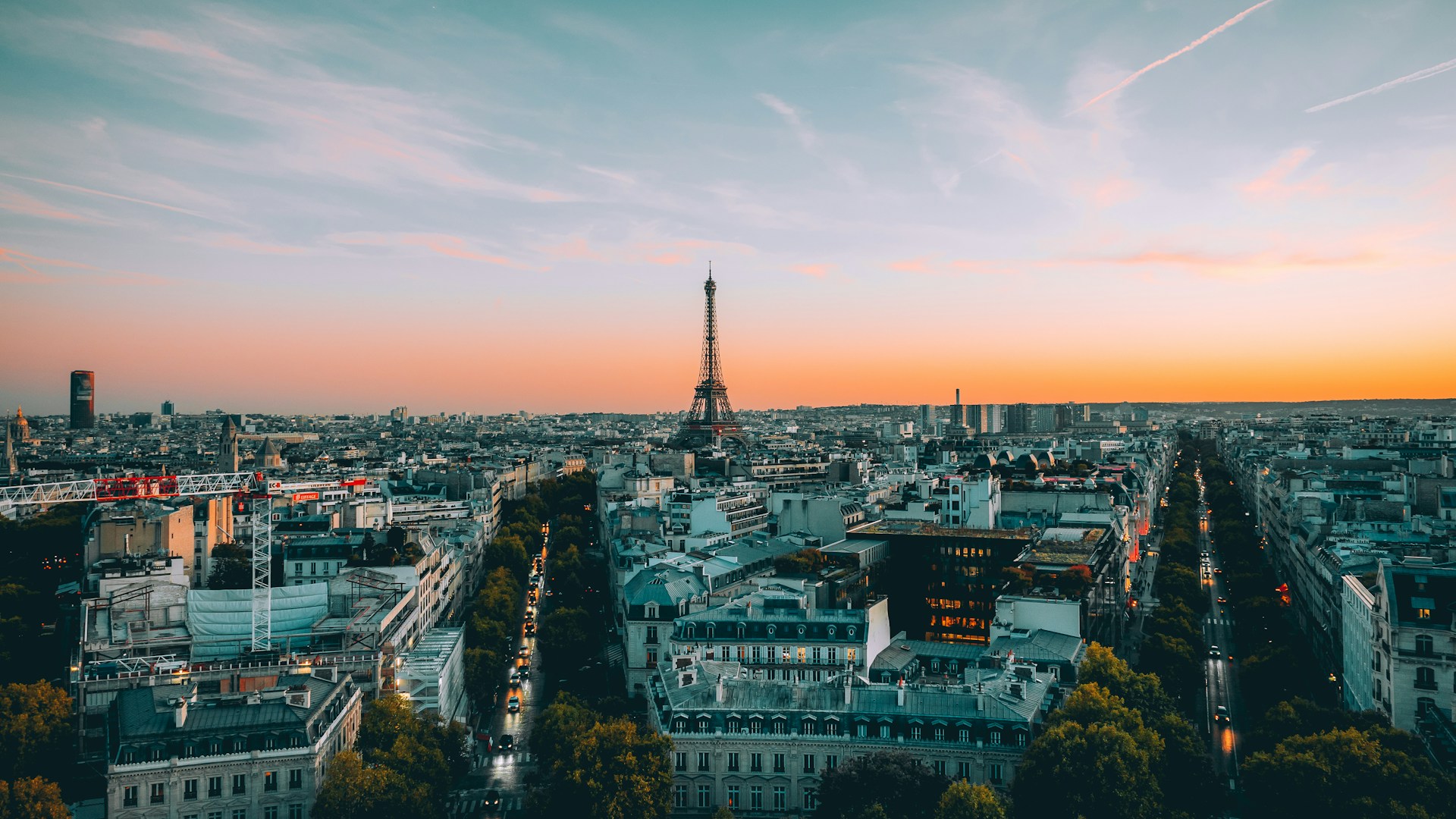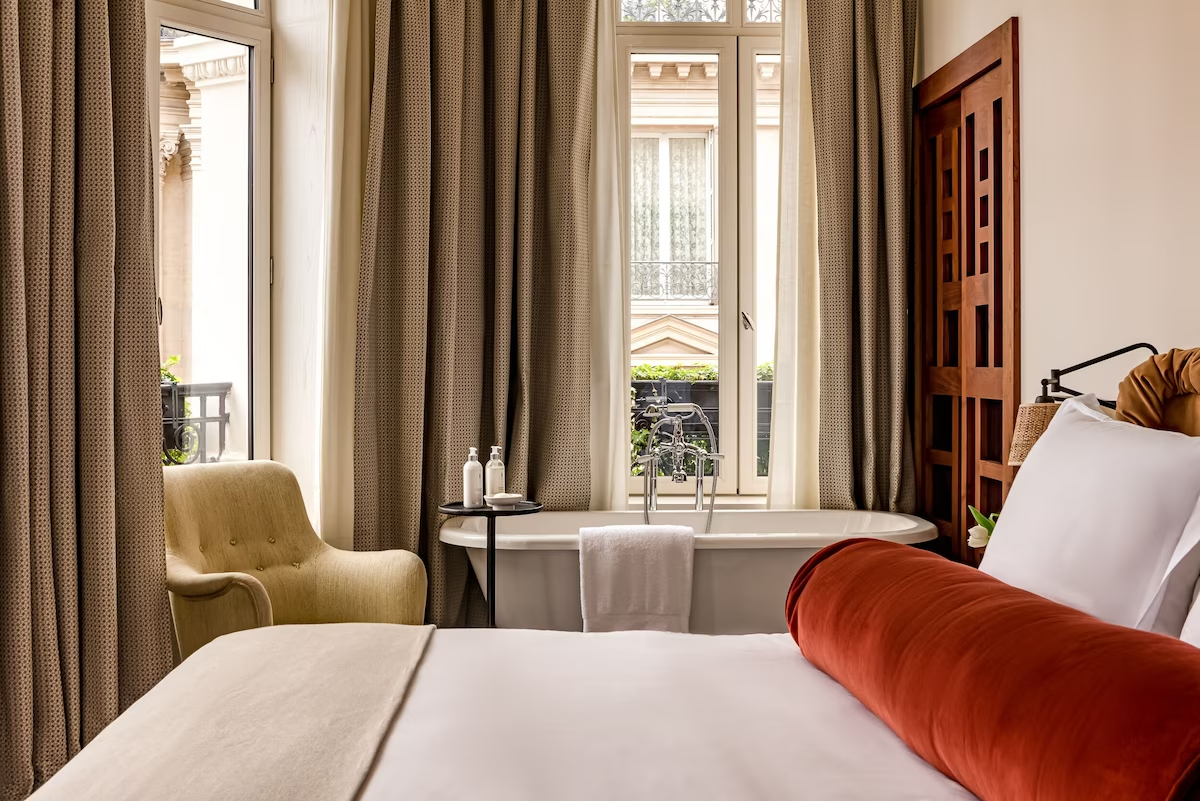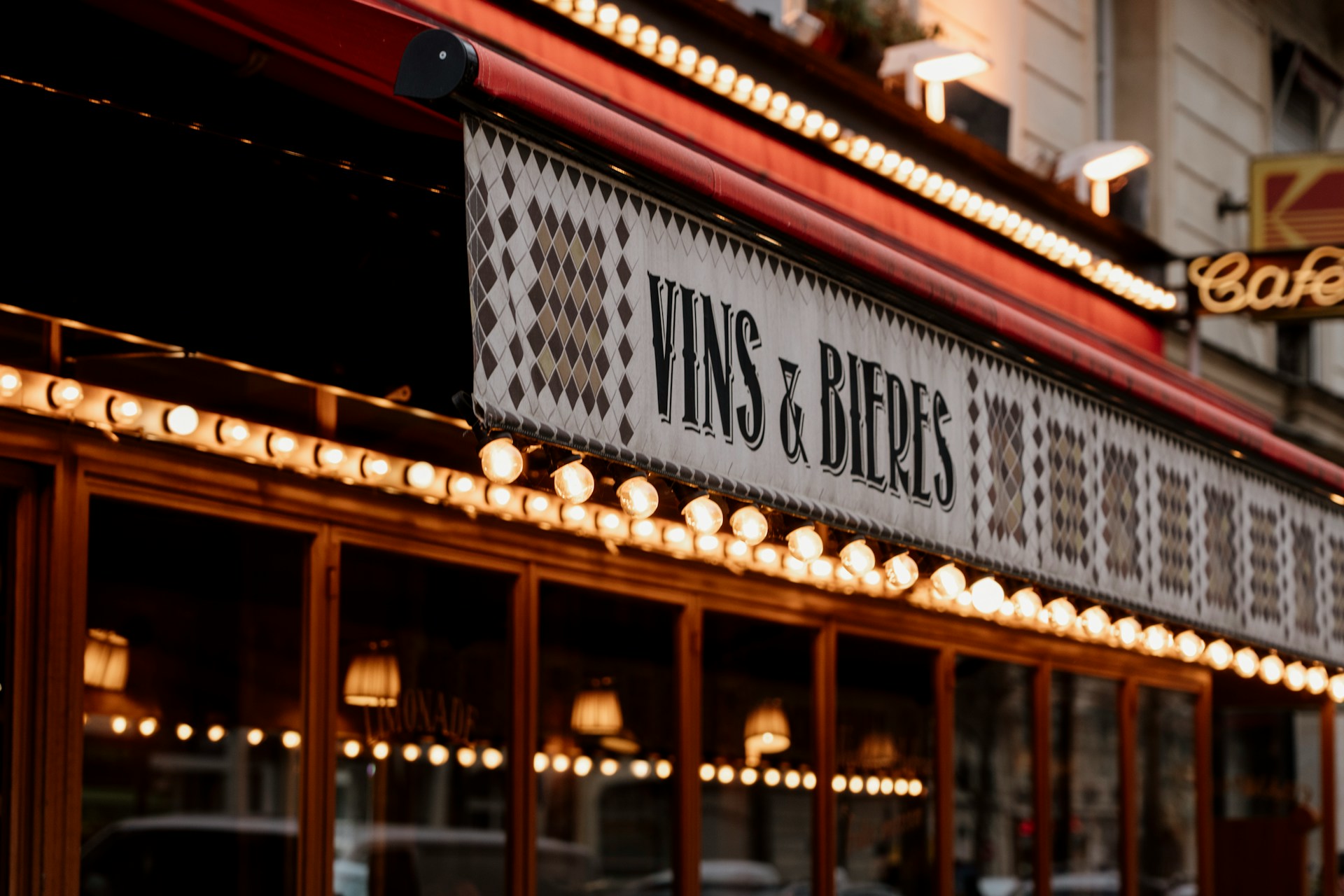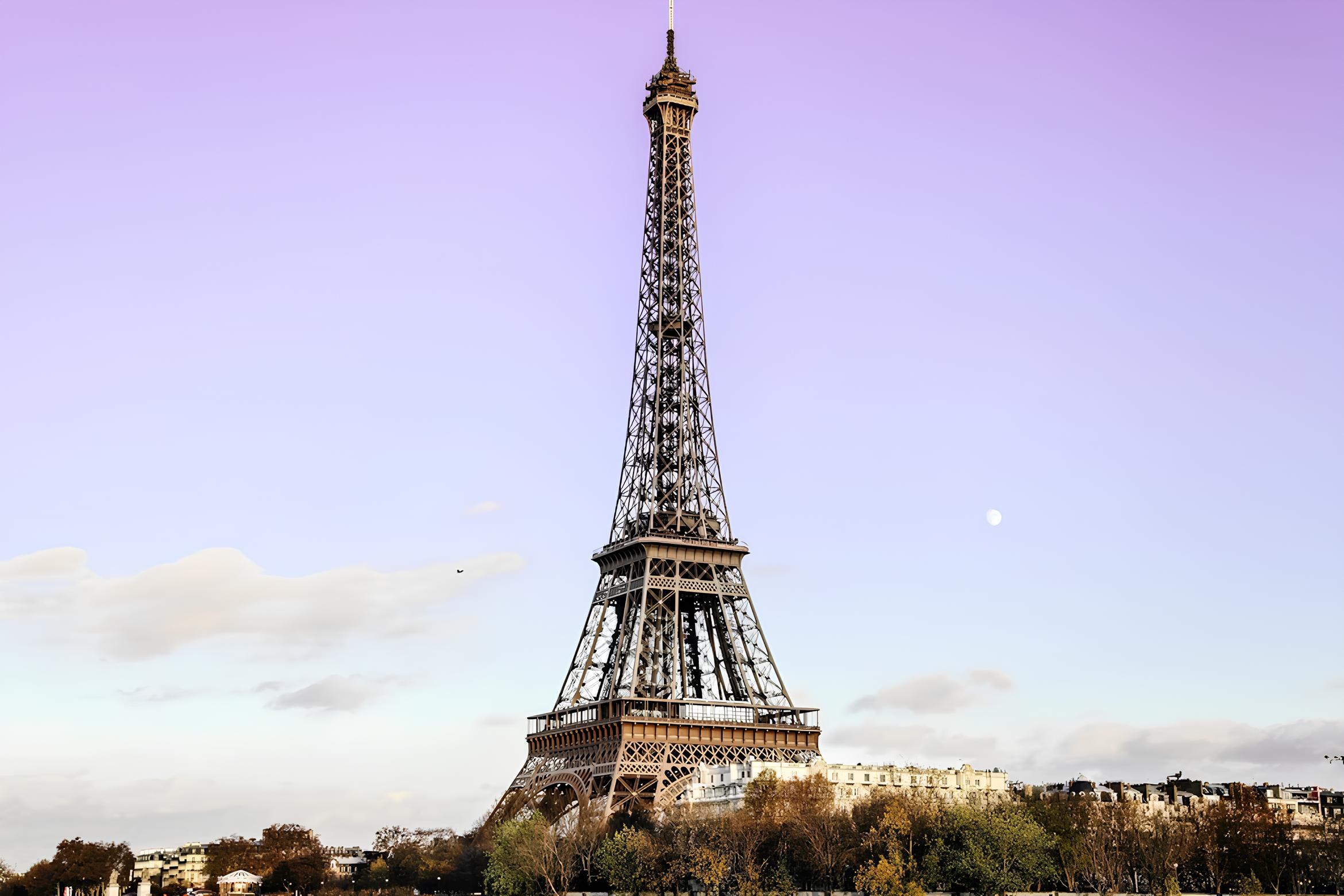The Top World Hotel Guide to Paris
Discover the ultimate guide to Paris in 2026. From boutique hotels and hidden cafés to art, food and timeless romance, explore the city like a local.

A City That Teaches You How to Feel
Paris is not a destination, it’s a sensation, a rhythm, a way of breathing.
Every corner of the city hums with stories. Quiet mornings as boulangeries open their shutters, the smell of roasted coffee drifting along cobblestone streets, the reflection of Haussmann rooftops shimmering after the rain. The city doesn’t ask to be seen, it asks to be felt.
In 2026, the art of visiting Paris has evolved. Travelers are no longer chasing monuments but emotions. They come for inspiration, for beauty in small gestures, for the elegance of imperfection. This guide is your invitation to live the city slowly, to wander, taste, observe, and belong.
Where to Stay
Parisian Neighborhoods and the Art of Choosing Well
Paris is a mosaic of moods. The Right Bank is bold and bustling, while the Left Bank is intellectual and romantic. Montmartre whispers bohemia, while Saint-Germain speaks in velvet tones. To know where to stay is to decide what version of yourself you wish to meet.
The best hotels in Paris do not simply host you. They mirror you. They translate the city’s personality into space, texture, and sound.
Below, three boutique hotels capture the essence of contemporary Paris. Poetic, grounded, and effortlessly elegant.
La Fantaisie. Nature in the Heart of the 9th
In the lively Faubourg-Montmartre district, La Fantaisie rises like a breath of fresh air. Designed by Martin Brudnizki, the hotel is an ode to joy and greenery. The interiors bloom with floral patterns, pastel walls, and sculpted brass details that glow like morning light.
Downstairs, the courtyard garden feels like a secret the city does not want to share. It is filled with lemon trees, birdsong, and sunlight filtering through ivy. You can hear the world just beyond, but it feels distant, like a forgotten noise.
At Golden Poppy, Michelin-starred chef Dominique Crenn brings California soul to French produce. A menu of freedom, freshness, and light. Upstairs, the rooftop bar opens to an ocean of chimneys and terraces, the city’s pulse softened by twilight.
La Fantaisie is for those who see luxury not as excess but as emotion. Every detail invites touch, every moment feels alive, created to let you pause, breathe and simply be.
Château des Fleurs. The New Golden Age of Parisian Romance
A few steps from the Champs-Élysées, Château des Fleurs redefines what it means to be classic. The building itself is a masterpiece of 19th-century architecture, yet inside, it feels intimate, like stepping into a Parisian apartment where time has softened every corner.
Curved lines, velvet sofas, and the warm glow of art nouveau lamps set a cinematic scene. The restaurant, OMA, bridges cultures, a conversation between French craftsmanship and Korean finesse. It is refined but never rigid.
From the balcony, Paris unfolds in soft light. The ironwork balconies, the treetops of the Golden Triangle, the sound of distant traffic mingling with birdsong. Here, romance feels timeless, and Château des Fleurs captures it with quiet grace.
Hôtel Providence Paris. Bohemian Soul in the 10th
If La Fantaisie is about poetry and Château des Fleurs about grace, Hôtel Providence is pure character.
Hidden on a quiet street in the 10th arrondissement, this small hotel embodies the creative pulse of Paris. Each room feels like a story. Dark floral wallpaper, velvet drapes, antique mirrors, and a minibar with brass cocktail shakers waiting for late-night improvisation.
The bar downstairs attracts filmmakers, designers, and writers. Outside, the cafés of the Canal Saint-Martin hum with laughter and clinking glasses. Inside, candlelight dances on marble tables and jazz fills the air.
Hôtel Providence doesn’t try to be Parisian, it just is. Effortlessly authentic, a little artistic, and quietly glamorous in its own way.
Where to Eat
Morning Rituals
Breakfast here is an act of grace.
Begin your day at Claus Paris, where croissants are crisp, granola is homemade, and sunlight spills through tall windows. Or stop at Café Kitsuné in the Jardin du Palais Royal for a perfectly balanced espresso and a view of the colonnade.
For something local, the bakeries of the 9th arrondissement, Du Pain et des Idées or Mamiche, remind you that no one does butter like the French.
Midday Indulgence
Lunch is when time slows down.
At Frenchie on Rue du Nil, chef Gregory Marchand blends French comfort with global flair. The menu changes with the seasons, pairing small plates and fine wines with the warmth of a neighbourhood bistro. It feels like a secret shared between friends.
In the 11th arrondissement, Septime remains a temple of sustainable gastronomy, minimalist, beautiful, and deeply respectful of nature. For something more spontaneous, Café Charlot in Le Marais offers the perfect bistrot experience, wooden chairs, zinc counters, steak-frites, and conversation.
Evenings in Bloom
Dinner is when the city begins to glow.
At Le Servan, sisters Tatiana and Katia Levha turn simple ingredients into quiet poetry, a dance of French roots and Asian nuance served with soul and light.
For seafood and natural wines, Clamato captures the rhythm of the city at dusk. And if you crave intimacy, book a corner table at Le Mary Celeste or Ellsworth, where soft light and quiet music make time disappear.
At Golden Poppy or OMA, dining becomes a ritual of design and flavor, a reflection of what Paris does best, reinventing itself without ever forgetting its soul.
What to Do
Morning. Wander, Don’t Plan
The beauty here belongs to wanderers. Begin your day in Le Marais, when the air is still crisp and the streets are half asleep. Walk without purpose and let the morning lead the way.
Browse the bookstores of Rue Vieille du Temple. Stop by Merci for inspiration and Fragments for the kind of espresso that turns strangers into friends.
Cross to the Left Bank for a change in tempo. Here, mornings are slower, conversations deeper. Café de Flore and Les Deux Magots still hold their mythic charm, though locals prefer Coutume or Ten Belles. The Jardin du Luxembourg remains timeless, with its statues, chestnut trees, and families sailing toy boats on the pond.
Afternoon. Art, Design, and Light
The afternoon feels cinematic, brushed with gold and quiet wonder.
Head to the Musée d’Orsay, not just for its art but for the way light filters through the old railway clock. Continue to Musée Rodin, where sculptures bask in the sun.
If you love design, visit the Musée des Arts Décoratifs, or the Bourse de Commerce – Pinault Collection, which bridges past and present through architecture and emotion.
Fashion lovers should not miss Galerie Dior, an immersive exploration of the maison’s creative history. For something quieter, wander through Passage des Panoramas, where time folds into nostalgia.
Evening. Paris After Dark
At night, the streets shimmer and voices soften. Lights reflect on the river, terraces fill with laughter, and the city feels like a secret meant to be shared.
Start with a drink at Le Bar Hemingway at the Ritz, where history lingers in every detail. Then cross the Seine to Saint-Germain-des-Prés, where jazz clubs still hum with life, Le Caveau de la Huchette, Duc des Lombards, Sunset Sunside.
Later, walk along the Pont Alexandre III, watching the city glow. The lights shimmer on the Seine, lovers stroll hand in hand, and the Eiffel Tower sparkles on cue. It is theatrical, yes, but that is the beauty of it.
When the night quiets, return to your hotel. A glass of wine, a sigh, a city that feels infinite.
Hidden Corners
The Art of Getting Lost
To see Paris differently, slow down.
Walk the Canal Saint-Martin and watch locals picnic on the banks, their laughter echoing against the water. Visit the Musée de la Vie Romantique, a hidden courtyard of roses and stories from another century.
In Belleville, street art and small galleries replace the postcard view. Stop at La Brasserie Barbès for a drink and a glimpse of modern multicultural Paris.
For a sense of quiet majesty, explore the Parc des Buttes-Chaumont, with its cliffs, lakes, and hidden temple. Few tourists make it there, yet it offers one of the most poetic views of the city.
And then there is Île Saint-Louis, where you can stroll in near silence at sunset. It is a reminder that the most beautiful places are often the ones that ask for nothing in return.
When to Visit Paris
Each season tells a different story. The light shifts, the rhythm changes, and the city reveals a new side of itself every time you return.
Spring. Renewal and Bloom
In April and May, the city feels reborn. Cherry blossoms frame the Eiffel Tower, and café terraces fill with sunlight and conversation. Walk along the Seine, where bookstalls reopen and lovers sit shoulder to shoulder on the quays.
This is the season of slow mornings and long walks. Pack light sweaters, curiosity, and time.
Summer. Golden and Languid
From June to August, everything glows with heat and freedom. Locals drift toward the coast, and what’s left behind feels half yours. Dine outdoors in Saint-Germain, drink chilled rosé at Le Perchoir rooftop, or sit by the Canal de l’Ourcq with music and friends.
Evenings stretch endlessly, and the air hums with life. The best advice? Do not plan too much. Let the city unfold like a summer novel.
Autumn. The Season of Light
If you could capture the city in one word, it would be October. The light softens, the air smells of roasted chestnuts, and everything feels cinematic. Galleries open new exhibitions, cafés glow in amber tones, and every park turns into an Impressionist painting. It is the perfect time for lovers, writers, and dreamers.
Winter. Stillness and Elegance
In winter, Paris withdraws inward. The streets glisten under gray skies, and the smell of chocolate and woodsmoke fills the air. Step into Café de Flore, order chocolat chaud, and watch umbrellas drift by.
Christmas markets sparkle at Tuileries and Hôtel de Ville, while January brings the hush that only Parisians know. A beauty stripped of performance, intimate and calm.
The Parisian Lifestyle
The city is a masterclass in how to live beautifully. Not loudly, but deliberately. It’s in the way a waiter sets down your coffee without a word, in how people wear simplicity like an art form, in the light that filters through tall windows at four in the afternoon.
The secret isn’t in monuments but in rhythm.
Life here is measured in gestures, a morning baguette, an afternoon pause, an evening walk by the river.
Luxury, in Paris, means taking your time.
From the ateliers of the Marais to the antique shops of Saint-Ouen, the city breathes design. Every object, every chair, every tile seems to have a story.
Boutique hotels such as La Fantaisie and Château des Fleurs reflect this spirit. Modern yet nostalgic, full of tactile beauty.
Art is everywhere. In the Pinault Collection, in hidden galleries on Rue de Turenne, in murals painted overnight in Belleville. Even a metro sign feels like part of the city’s design language.
Fashion in Paris is not about excess. It is about ease. The undone hair, the linen shirt, the loafers worn soft.
To dress like a Parisian is to understand restraint. One striking detail, never more.
To live like one is to choose pleasure in moderation. One glass of wine, one conversation, one moment at a time.
Three Perfect Days in Paris
Day 1. Arrival and the Right Bank
Morning. Arrive at La Fantaisie. Open the window. Listen to the hum of Faubourg-Montmartre below. After coffee in the garden, wander toward Opéra Garnier and the covered passages nearby.
Lunch. Stop at Bouillon Chartier, a timeless brasserie buzzing with life, or Frenchie for something more refined.
Afternoon. Explore Le Marais. Visit Musée Picasso, browse Merci, and pause for coffee at Café Charlot.
Evening. Return to your hotel for cocktails at Golden Poppy’s bar, then dine in SoPi (South Pigalle), where new bistros and speakeasies light up the night.
Day 2. The Left Bank and Artistic Paris
Morning. Cross the Seine to Saint-Germain-des-Prés. Walk through the Jardin du Luxembourg, stop at Café de Flore for breakfast, and spend an hour at the Musée d’Orsay.
Lunch. Try Le Relais de l’Entrecôte or Les Deux Magots for a classic experience.
Afternoon. Shop along Rue Bonaparte, visit Galerie Kreo, and end with a quiet break at Shakespeare and Company, where the smell of books and the view of Notre-Dame never grow old.
Evening. Dinner at OMA in Château des Fleurs, followed by a walk down Avenue Montaigne. The city sparkles, elegant and unhurried.
Day 3. Hidden Corners and Local Rhythm
Morning. Wake up at Hôtel Providence. The 10th arrondissement is at its best before noon. Stroll along Canal Saint-Martin, watch boats drift beneath cast-iron bridges, and stop for brunch at Holybelly.
Afternoon. Discover Belleville or Buttes-Chaumont for art and views. If you crave calm, the Musée de la Vie Romantique is a sanctuary of roses and poetry.
Evening. End your trip where it all began, by the Seine. Buy a bottle of wine, sit on the steps near Pont Neuf, and watch the city exhale into night. That is the moment you understand Paris.
Frequently Asked Questions
What is the best time to visit Paris?
Spring and autumn offer mild weather, golden light, and fewer crowds. Summer is lively but warm, while winter is peaceful and intimate.
Where should I stay for an authentic Parisian experience?
Choose boutique hotels such as La Fantaisie in the 9th, Château des Fleurs near the Champs-Élysées, or Hôtel Providence in the 10th. Each reflects a different facet of the city.
What are the best areas to explore on foot?
Le Marais, Saint-Germain-des-Prés, and Canal Saint-Martin are ideal for slow walks, cafés, and local shops.
Which museums are worth visiting beyond the Louvre?
Musée d’Orsay, Musée Rodin, the Pinault Collection, and the Fondation Louis Vuitton offer stunning architecture and world-class art.
Where can I eat like a local?
Opt for neighborhood bistros such as Le Servan, Clamato, or Chez Georges. Avoid menus translated into five languages.
How long should I stay in Paris?
Three to five days is perfect for a first visit, though a week allows you to truly settle into the city’s rhythm.
What makes Parisian luxury unique?
Emotion. It is a kind of beauty that feels effortless, rooted in authenticity, texture, and time.